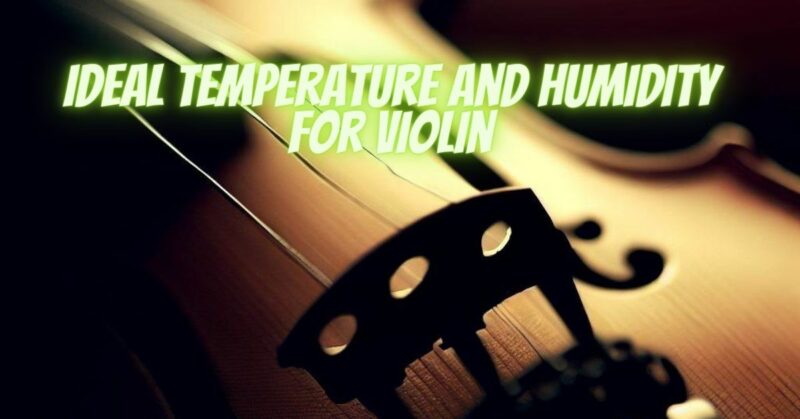Maintaining the proper temperature and humidity levels is crucial for the well-being and longevity of your violin. Fluctuations in temperature and humidity can cause damage to the delicate structure and materials of the instrument, affecting its tone, playability, and overall health. In this article, we will explore the ideal temperature and humidity conditions for violin care and provide practical tips on how to achieve and maintain them.
Ideal Temperature for Violin Care:
The ideal temperature range for storing and playing a violin is generally between 60°F (15°C) and 75°F (24°C). Here are some key considerations:
- Avoid Extreme Temperatures:
- High temperatures can cause the glue joints to weaken, leading to structural issues. Avoid exposing your violin to direct sunlight, hot vehicles, or other sources of excessive heat.
- Extremely low temperatures can make the wood more brittle and susceptible to cracks. Avoid exposing your violin to freezing temperatures or rapid temperature changes.
- Acclimate to Room Temperature:
- Before playing your violin, allow it to acclimate to the room temperature by keeping it in its case for a few minutes. This helps minimize the effects of temperature variations on the instrument.
Ideal Humidity for Violin Care:
Maintaining the proper humidity level is equally important for the health of your violin. The ideal humidity range for a violin is generally between 40% and 60%. Consider the following guidelines:
- Use a Hygrometer:
- Invest in a reliable hygrometer to measure the humidity levels in the room where your violin is stored. This device will help you monitor and maintain the appropriate humidity range.
- Humidify During Dry Conditions:
- During dry seasons or in areas with low humidity, use a humidifier to add moisture to the air. You can use a room humidifier or consider specialized humidifiers designed specifically for instrument cases.
- Place a damp sponge or a specialized humidifying device, such as a Dampit or an Oasis humidifier, inside your violin case to regulate humidity.
- Dehumidify During Humid Conditions:
- In regions with high humidity or during humid summer months, use a dehumidifier or take measures to reduce humidity levels in the room where your violin is stored. This helps prevent excess moisture absorption by the wood.
- Store the Violin in a Case:
- A high-quality, well-fitted case provides additional protection against humidity fluctuations. Choose a case that offers proper insulation and seals well to maintain stable humidity levels.
- Avoid Damp or Wet Environments:
- Keep your violin away from damp basements, bathrooms, or areas prone to water leaks. Moisture exposure can lead to swelling, warping, and damage to the instrument.
Conclusion:
Maintaining the ideal temperature and humidity conditions is essential for preserving the quality and lifespan of your violin. By storing the instrument within the recommended temperature range, avoiding extreme temperatures, monitoring humidity levels, and using humidifiers or dehumidifiers when necessary, you can ensure that your violin remains in optimal condition. Remember to regularly inspect your instrument and consult with a professional luthier for guidance on violin care, as they can provide specific recommendations based on your instrument’s unique needs. With proper temperature and humidity control, you can enjoy playing your violin while safeguarding its longevity and performance.

